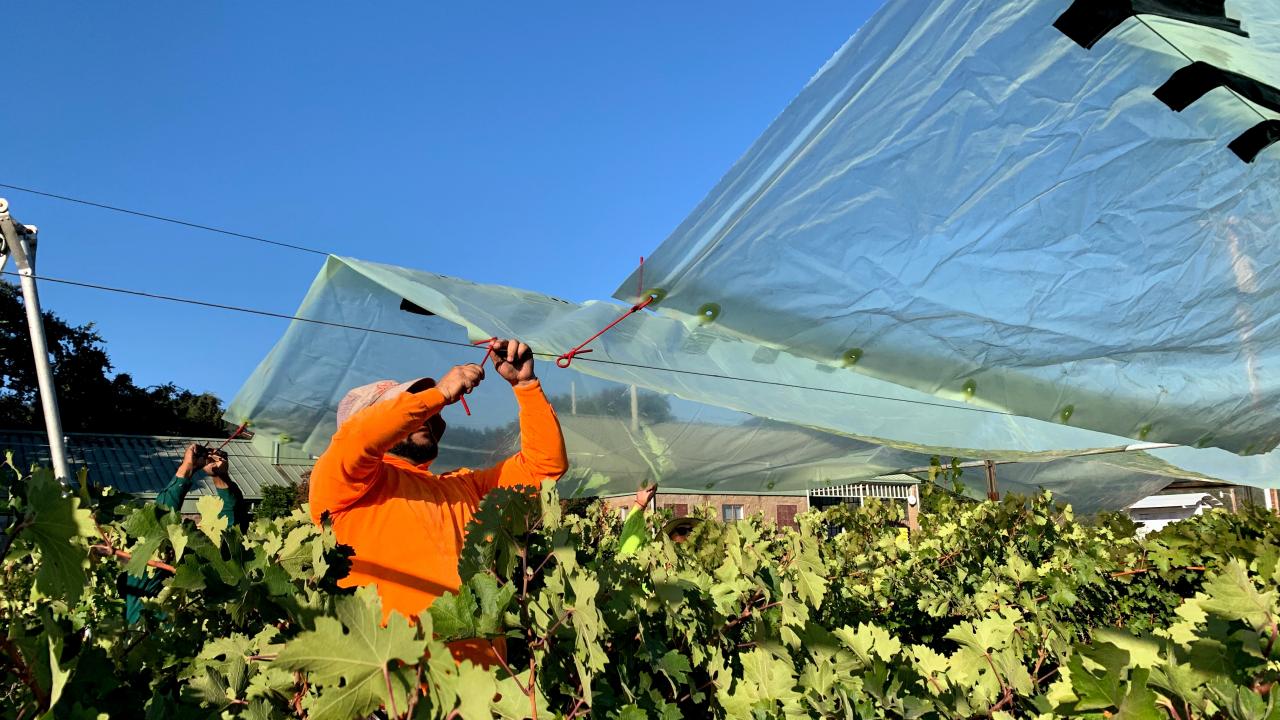Warming temperatures over the past 60 years have led to increased wine quality, but a new study looking at sugar and color content in grapes indicates the industry may be facing trouble if trends continue, according to collaborative research out of the University of California, Davis, and University of Bordeaux.
“Quality has increased steadily up to now,” said lead author Kaan Kurtural, a professor of viticulture and enology and an extension specialist at UC Davis. “We just don’t know the tipping point.”
Kurtural’s research, published in the journal OENO One, focuses on two renowned wine regions — Napa Valley and Bordeaux, France.
Researchers looked at ripening, grape quality and temperature data over six decades in both regions and then confirmed the findings with a five-year trial in Napa. They also consulted wine ratings in publications like Wine Spectator to gauge consumer demand.
One key finding: As temperatures exceeded what was considered the optimal level for quality, the grapes produced better wines.
“Previous research had few field data, but a record of assumptions,” said Kurtural.
Other quality factors at play
Temperature is a factor, but the paper suggests that sugar and color content should not be discounted. The authors also identified a biomarker that affects taste, color and other factors that can be the bellwether for climate change in red-skinned wine grapes.
“Temperature is always there,” he said. “Temperature is not your bellwether.”
Higher temperatures can harm grape composition, including color, taste and aroma. Researchers examined pigment and sugar content of five California vintages of cabernet sauvignon, finding that as the grapes got sweeter the skin and color deteriorated.
The degradation of these quality-related compounds and the observed plateaus of wine quality ratings suggests there can be too much of a good thing.
Researchers have long theorized that increasing temperatures from climate change would lead to shifts in wine-growing regions, opening up some new areas for vineyards and making others unsustainable.
That shift could be a boon to some economies and devastating to others, something the industry should watch.
“Since the 1980s, grapes got riper and they were able to make better flavor and color compounds,” Kurtural said. “Are we going to lose this or adapt more?”
Gregory A. Gambetta with the University of Bordeaux is a corresponding author on the paper.
Media Resources
Media Contacts:
- Kaan Kurtural, Viticulture and Enology, cell 707-200-5378, skkurtural@ucdavis.edu
- Amy Quinton, UC Davis News and Media Relations, cell 530-601-8077, amquinton@ucdavis.edu
- Emily C. Dooley, College of Agricultural and Environmental Sciences, cell 530-650-6807, ecdooley@ucdavis.edu
